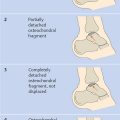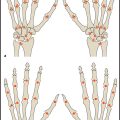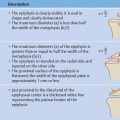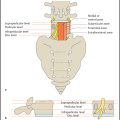Osteoarthritis
Kellgren–Lawrence Score
Although many new and modified scores have been published for the quantification or semiquantification of radiologic findings in osteoarthritis, the grading system introduced by Kellgren and Lawrence in 1957 and 1963 is still widely used today. It is easy to use (even in routine clinical work) and yields reproducible results. The Kellgren–Lawrence score was recognized at a 1961 World Health Organization conference as the standard for grading osteoarthritis in large epidemiologic studies.
The Kellgren–Lawrence classification is based on the interpretation of conventional radiographs. In the original 1957 publication, the score was determined from radiographs of the hands, knee joints, cervical and lumbar spine, and hip joints.
A corresponding radiographic atlas published in 1963 established a system for classifying osteoarthritic changes into five distinct stages based on the following radiographic signs ( Fig. 12.1 ):
Osteophytes
Joint-space narrowing
Subchondral sclerosis
Deformity of the bone ends
Cyst formations (hip joint, first carpometacarpal joint, proximal interphalangeal joint, distal interphalangeal joint)
Stay updated, free articles. Join our Telegram channel

Full access? Get Clinical Tree








